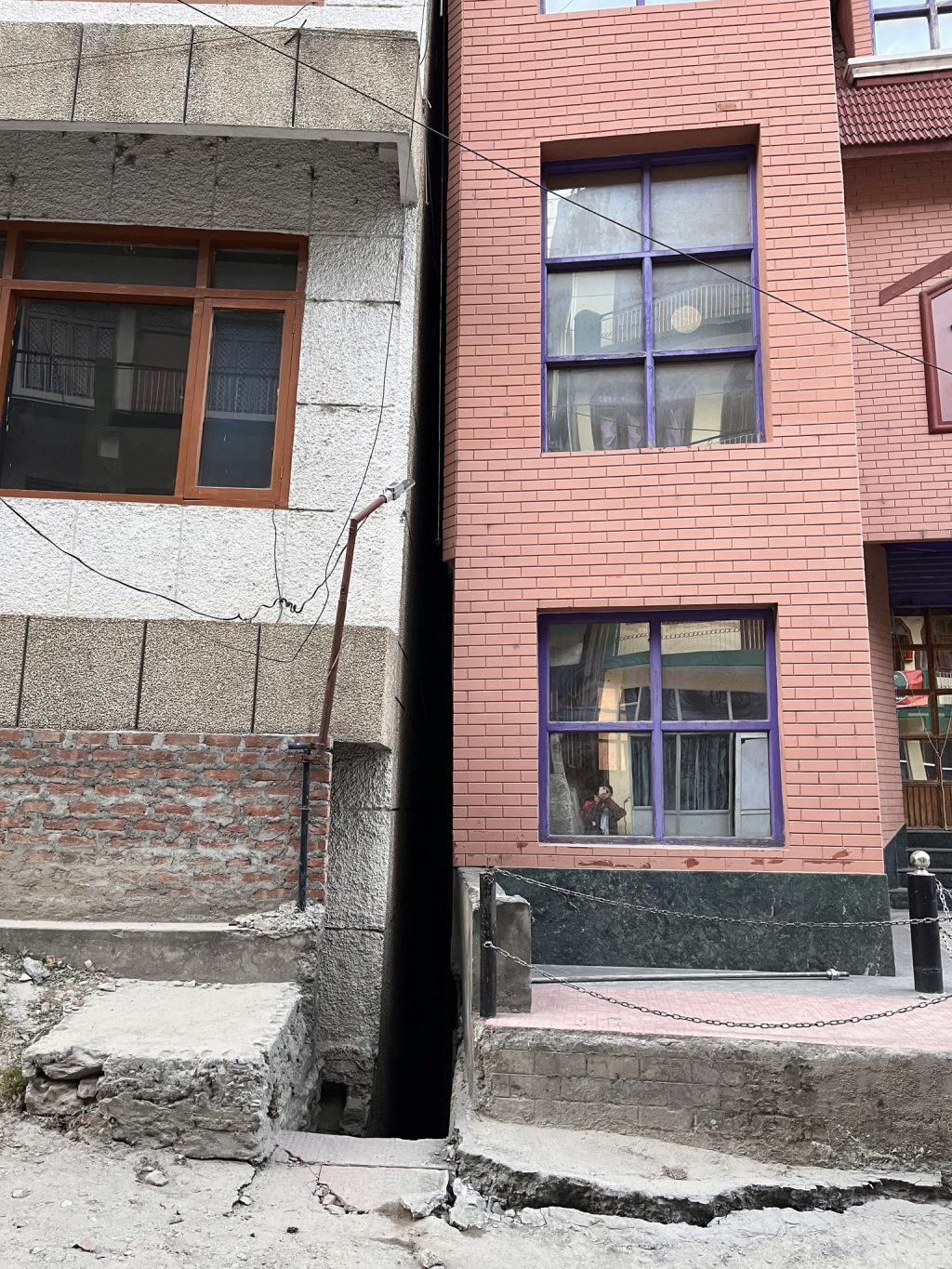Joshimath: Human greed wrecks fragile ecology; govt looked other way

By Baijayanti Rout
Ahmedabad, January 8: A temple in Joshimath, a Himalayan town in Uttarakhand, on Saturday fell, raising worries among locals, who had been camping out in the cold about the fate of 600 homes and other structures that had developed cracks as a result of the soil moving. The afflicted households have been ordered to be evacuated, and Chief Minister Pushkar Singh Dhami authorised temporary shelters for them.
For a door-to-door survey, a group of specialists and scientists is stationed in the Himalayan town. Joshimath’s residents have expressed alarm after noticing fissures in the town’s structures and streets, which they have described as the town “gradually sinking”. Due to objections from the concerned locals, the Uttarakhand government halted construction activities in the region on January 5 as a result of soil subsidence that led to 561 homes in Joshimath developing cracks.
More than 10 years ago, experts had warned of the risks of the ground sinking in the region due to quick and thorough stratum of dewatering. The town’s sinking is hardly shocking, as no preventative measures were taken by the administration.
According to a survey report by the Uttarakhand State Disaster Management Authority (USDMA) in August 2022, Joshimath’s slope instability issues had become worse as a result of impromptu building that didn’t take bearing capacity into consideration. Building retaining walls would allow for the development of several more structures in the landslide-prone area.
The weak slope is now under more stress as a result. In the last 10 years or so, people claim that a number of new multi-story buildings appeared in and around Joshimath town. One of these structures recently tilted due to subsidence. Hydroelectric projects, notably the Vishnugad HE Project, have been permitted close to Joshimath and Tapovan despite the geological hazards of the area.
Experts and the USDMA emphasised increasing ground seepage of water from the surface as a potential cause of sinking. Natural water drainage channels have been impeded by anthropogenic surface-level activities, forcing water to seek out other drainage paths.
Additionally, Joshimath does not have a sewage or wastewater disposal infrastructure. The seepage reduces the shear strength of the overloaded soil. This may be observed in the region of Joshimath, where subsidence has caused the water pipes to kink.
The Uttarakhand Himalayas have already shown a tendency toward more unusual weather occurrences. They are causing avalanches, flash floods, landslides, and forest fire events to occur more frequently and with greater intensity throughout the springtime.
Joshimath’s sinking also demonstrates how human intervention might have catastrophic effects on Uttarakhand and a sizable portion of India. For the local community as well as the government, the landslide and crack in Joshimath are nothing new.
However, the government has not taken any action to stop this devastation; instead, it has started local development projects. This problem is a long-term phenomenon brought on by climate change, not a short-term one. Any development planning is likely to fall short of expectations if there is no long-term plan for environmental conservation of the sensitive watershed areas.
This necessitates both frequent glacial lake monitoring and the inclusion of catastrophe risk assessment in developmental planning. Unless the development projects are stopped, it is not within our power to halt this type of damage. Controlling the climate change contributor is absolutely vital. Although environmental concerns are a worldwide problem rather than a local one, we should nonetheless consider them.
The government should permanently halt all development initiatives and also put a permanent stop to all construction projects in the region on a moderate basis.







